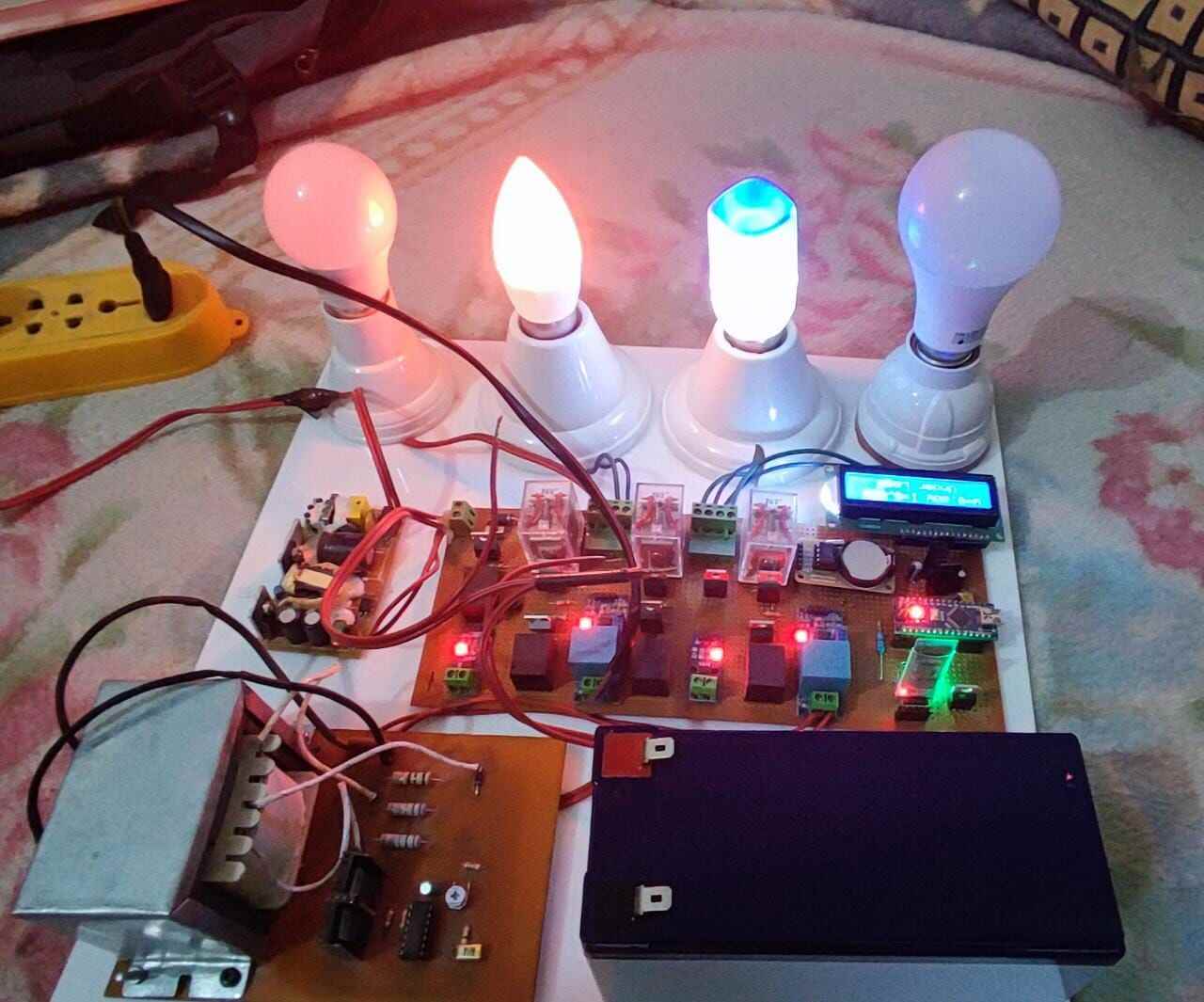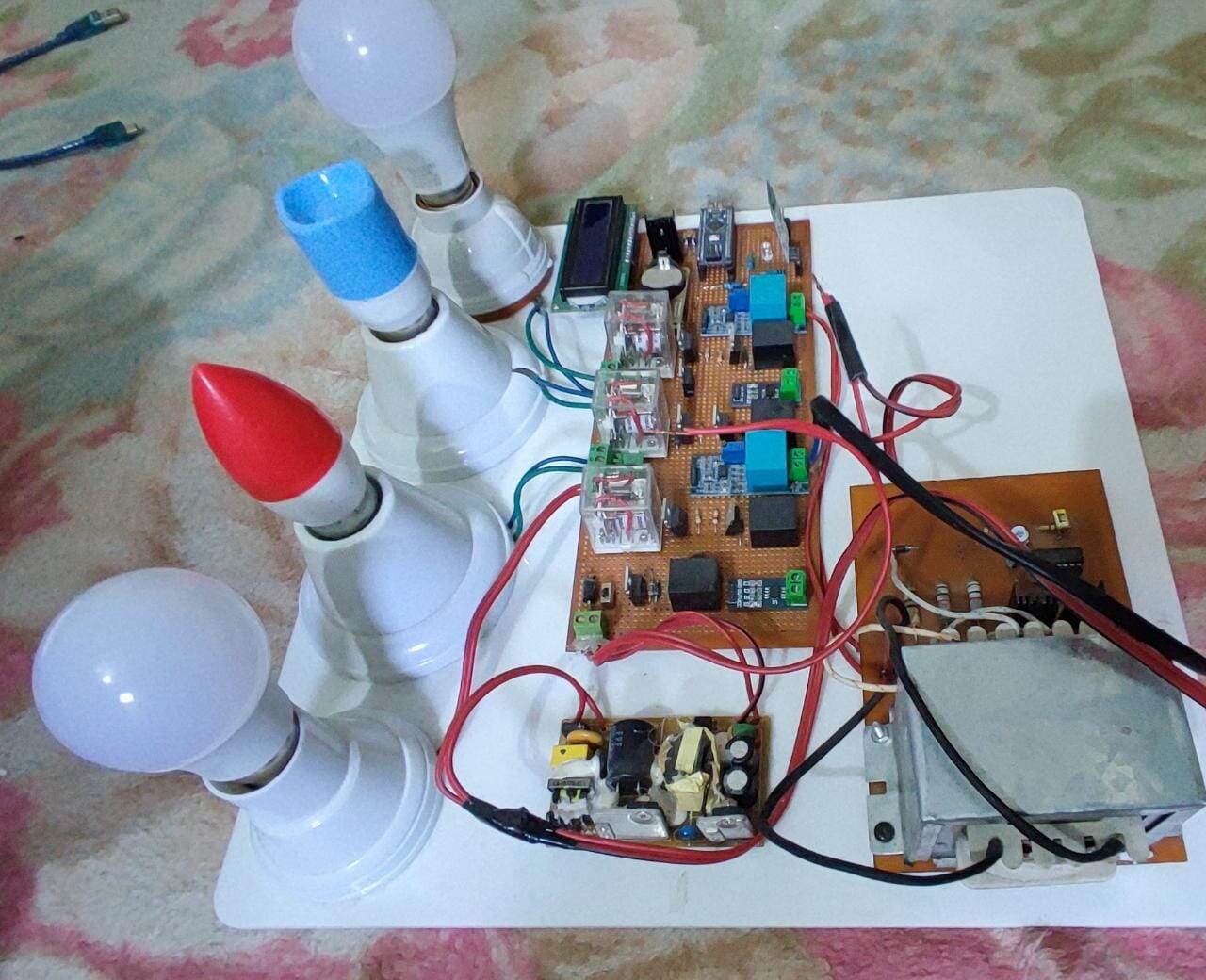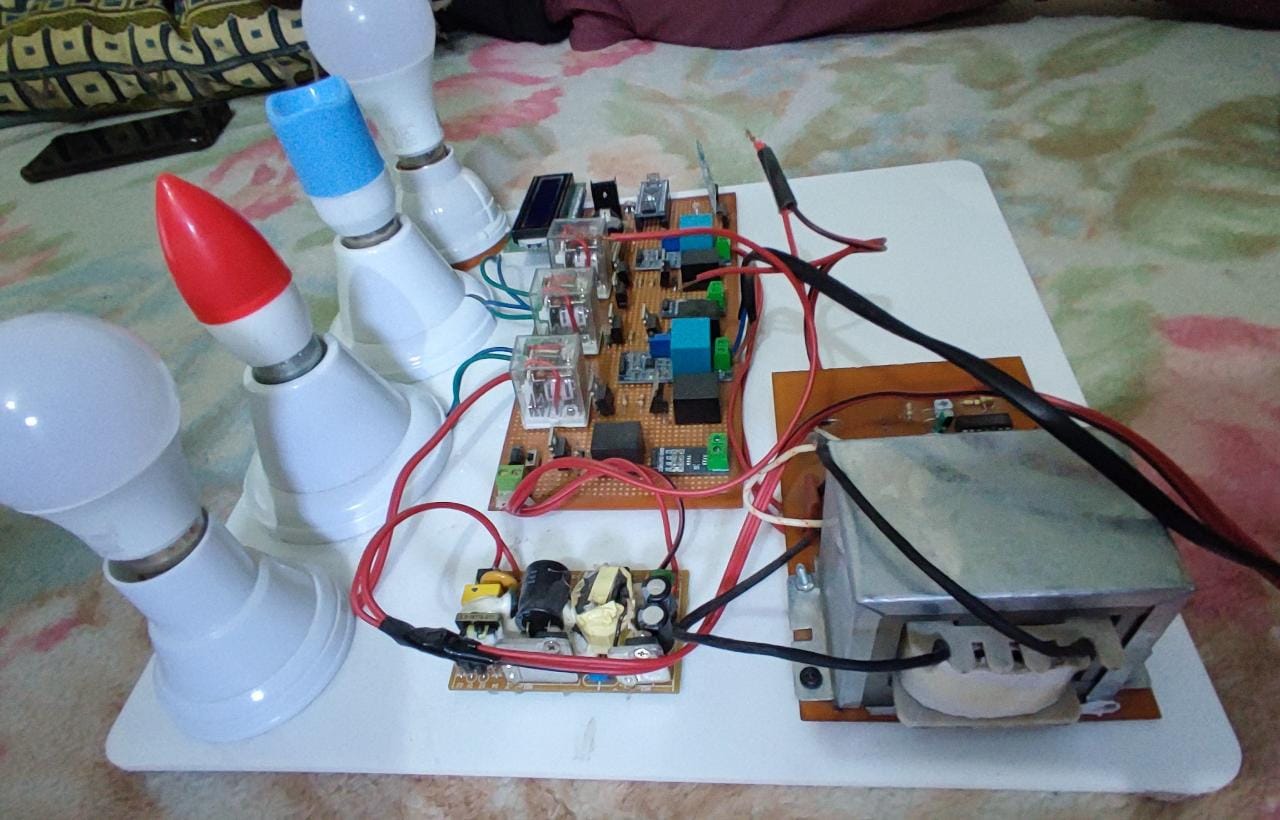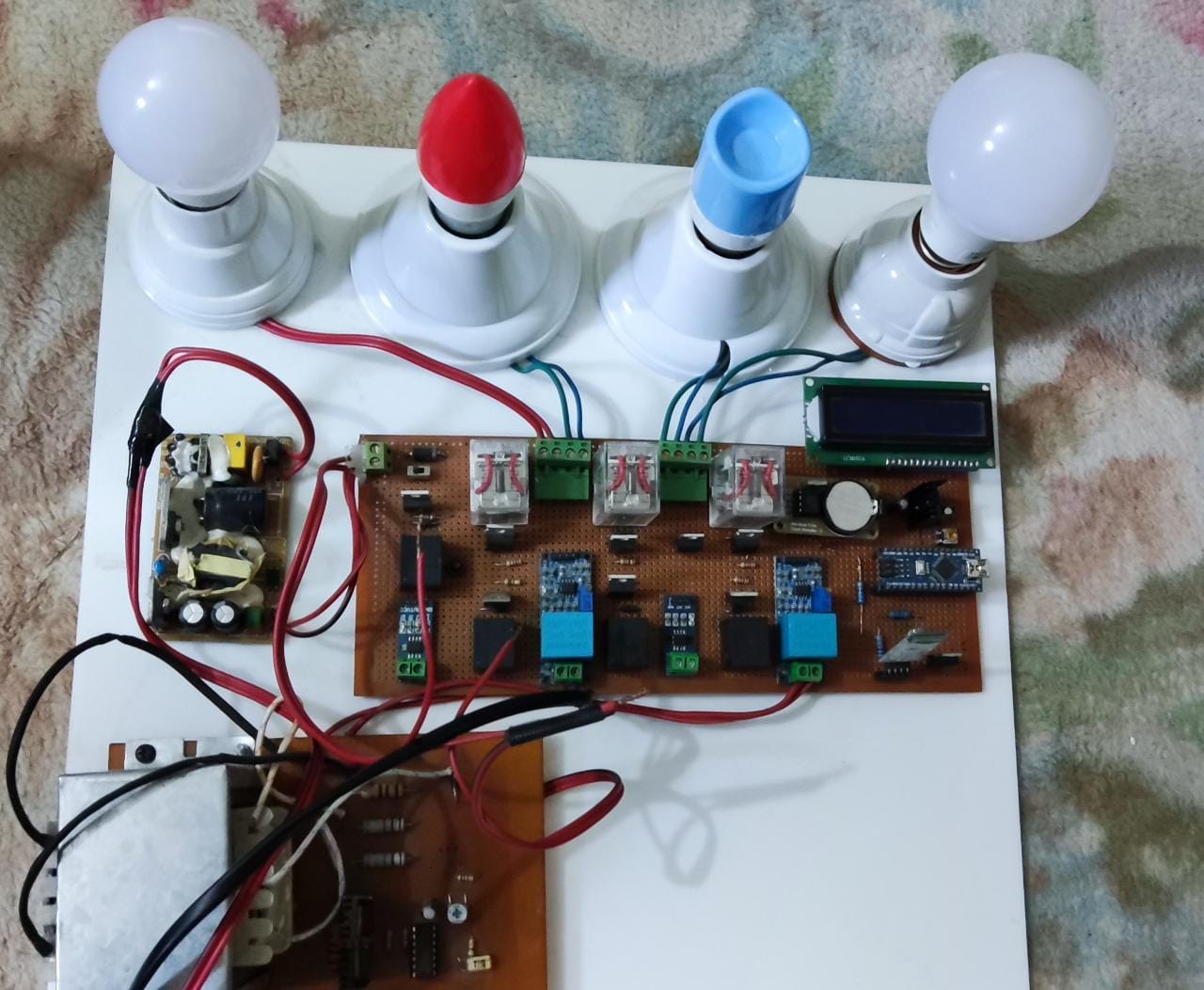The project aims to design, model and simulate a Home Energy Management System based on a renewable generation source i.e. solar photovoltaic (PV) system and a battery storage system. It stores solar energy into the battery during the day that could also be utilized during peak hours. The objectives of this project are to automate, schedule, monitor and manage home appliances in peak hours. The main component of this project is the Arduino Nano MicroController, which performs all the functions of the project. We are using ACS712 and ZMPT101b which reads the current and voltage value of total loads respectively. An RTC module is used for scheduling home appliances. An LCD module is used that gives us the detail about the usage of appliances. We are using two types of relays in our project. The first one is Single Pole Double Throw(SPDT) and the other is Double Pole Double Throw(DPDT). The Single Pole Double Throw is used to turn “ON” and “OFF” the loads. While the Double Pole Double Throw is used to shift the load from Wapda to Battery or Vice Versa. Although we are also getting this information through Bluetooth communication with mobile phone by using an application built by our team. The application is secured by a password. Through the application, we control all functions of projects. Also, we add an option in the application that if the total load exceed the limits, then an Arduino sends the message through Bluetooth and an alarm is ringing indicating the user about the Over Load condition. The solar energy generates from the solar panel is store in the battery during the daytime. In our home, there are di?erent types of load. As the total power of the prototype house is 20 watt. The light load has 2 small bulbs that consume 3 watts and it is considered a light load. Medium load consumes 5 watts and it is considered a medium load. Heavy Load consumes 12 watts and it is considered a Heavy load.
Light load is operated on Battery in Peak-Hour and in other Hours it is operated on Wapda.
Medium load is operated on Wapda, but if the battery has enough power then the user can operate it on Battery.
A heavy load can only be operated on Wapda power and it is o? in Peak Hour.
When there is O? Peak-Hour, then all the load is operated on Wapda. In the day, we charge our Battery through the solar system and use this energy at night when Peak-Hour reached. The total power consumed by appliances is shown on LCD and it is also shown on the user mobile if the user wants to know the total load running on Wapda. The user has a choice to turn on/o? every appliance whenever he wants and also user can shift medium load to Wapda if he wants to do that. RTC Module is used that calculates the real-time, and when Peak-Hour comes, Arduino detects and shift the light load to the battery. In Peak-Hour medium load still runs on Wapda, but if the user wants, he shifts it to the battery. The heavy load is o? in Peak-Hour, but the user has the control to turn on in Peak-Hour if necessary.











